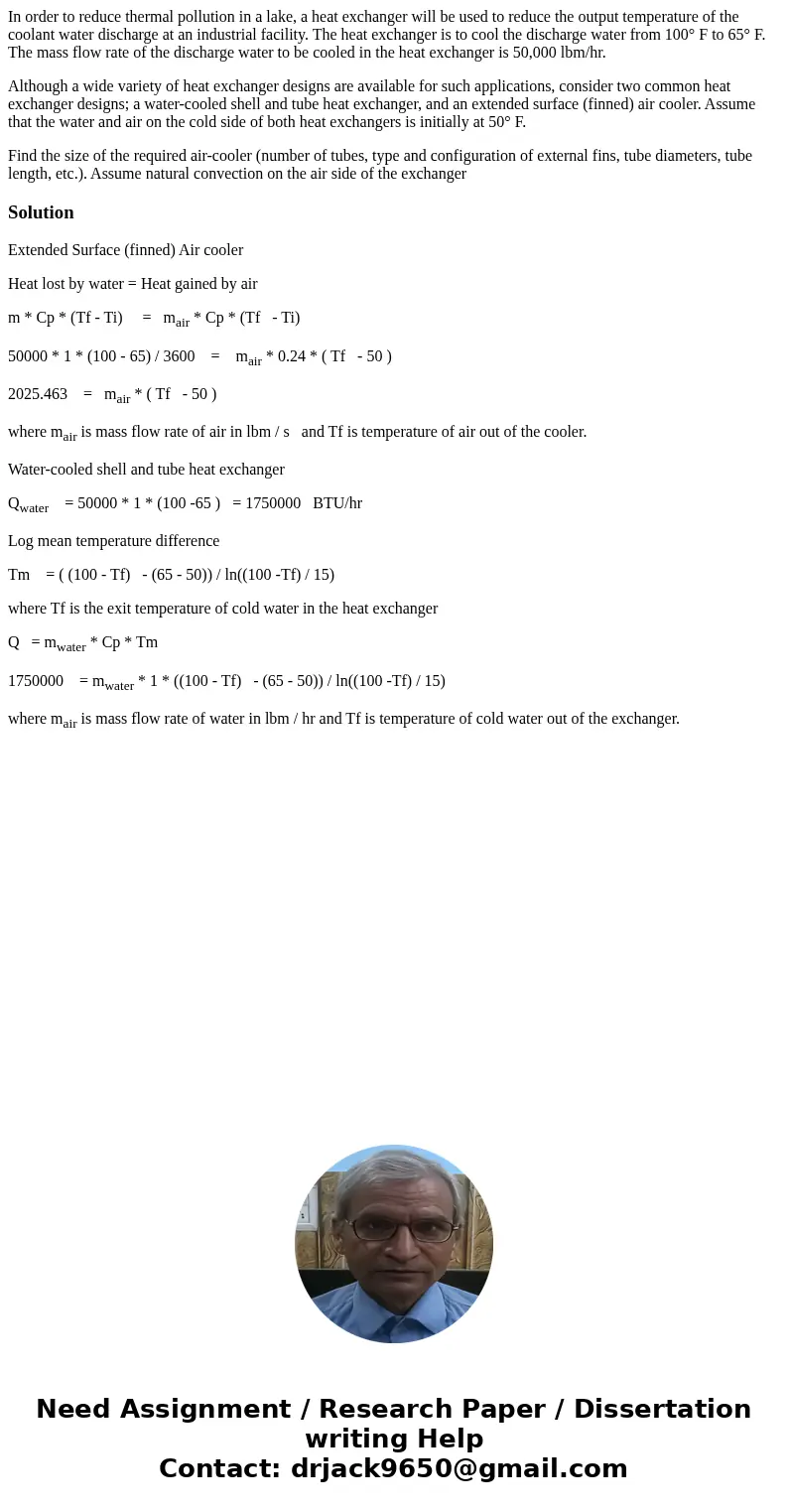In order to reduce thermal pollution in a lake a heat exchan
In order to reduce thermal pollution in a lake, a heat exchanger will be used to reduce the output temperature of the coolant water discharge at an industrial facility. The heat exchanger is to cool the discharge water from 100° F to 65° F. The mass flow rate of the discharge water to be cooled in the heat exchanger is 50,000 lbm/hr.
Although a wide variety of heat exchanger designs are available for such applications, consider two common heat exchanger designs; a water-cooled shell and tube heat exchanger, and an extended surface (finned) air cooler. Assume that the water and air on the cold side of both heat exchangers is initially at 50° F.
Find the size of the required air-cooler (number of tubes, type and configuration of external fins, tube diameters, tube length, etc.). Assume natural convection on the air side of the exchanger
Solution
Extended Surface (finned) Air cooler
Heat lost by water = Heat gained by air
m * Cp * (Tf - Ti) = mair * Cp * (Tf - Ti)
50000 * 1 * (100 - 65) / 3600 = mair * 0.24 * ( Tf - 50 )
2025.463 = mair * ( Tf - 50 )
where mair is mass flow rate of air in lbm / s and Tf is temperature of air out of the cooler.
Water-cooled shell and tube heat exchanger
Qwater = 50000 * 1 * (100 -65 ) = 1750000 BTU/hr
Log mean temperature difference
Tm = ( (100 - Tf) - (65 - 50)) / ln((100 -Tf) / 15)
where Tf is the exit temperature of cold water in the heat exchanger
Q = mwater * Cp * Tm
1750000 = mwater * 1 * ((100 - Tf) - (65 - 50)) / ln((100 -Tf) / 15)
where mair is mass flow rate of water in lbm / hr and Tf is temperature of cold water out of the exchanger.

 Homework Sourse
Homework Sourse